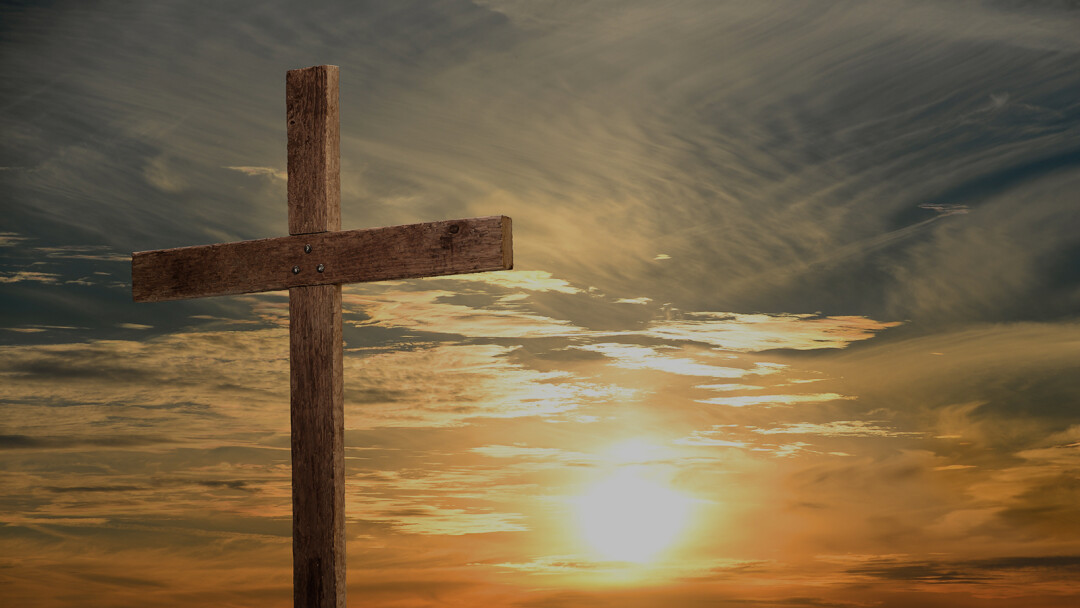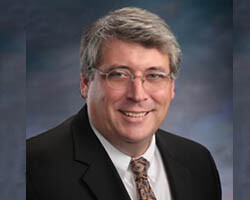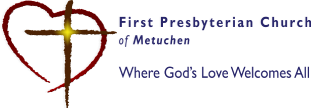Secure in the Knowledge

“Secure in the Knowledge”
Matthew 21:23-27
When he entered the temple, the chief priests and the elders of the people came to him as he was teaching, and said, “By what authority are you doing these things, and who gave you this authority?” Jesus said to them, “I will also ask you one question; if you tell me the answer, then I will also tell you by what authority I do these things. Did the baptism of John come from heaven, or was it of human origin?” And they argued with one another, “If we say, ‘From heaven,’ he will say to us, ‘Why then did you not believe him?’ But if we say, ‘Of human origin,’ we are afraid of the crowd; for all regard John as a prophet.” So they answered Jesus, “We do not know.” And he said to them, “Neither will I tell you by what authority I am doing these things.
For many years I would travel to Mexico with a band of wily youth and wayward adults, sleep on the ground, work like a dog in the heat and dust of back streets of Tijuana. We built houses.
I made this annual pilgrimage for one moment, one glance. I wanted to see the lingering, the long stare of veteran Mexico mission house builders, the teens on their second, third, fourth trip who stand off to the side on the first day of creation, concrete slab day, I would go all that way just to watch them stare at the ground.
The ground was the hardscrabble sandstone which is impervious to all but the hearty and the hale, this ground which will soon be covered in five inches of hand mixed concrete, all 11x22 feet of it. I want to see the youth stare at the ground to discern where it rises, falls— what needed to be reduced or built up so to create the level pad and thus the level foundation for the modest house they were to build in four days.
I love this knowing stare, the curious and concerned appraisal of the site. Each of them knows they cannot start mixing the concrete until the site is ready. Nothing could be poured without forms in place, without the ground being leveled; nothing could happen until they made the uneven ground even. Some stand with pick or shovel in hand ready to be directed to a high or low point, some ready the concrete mixing station or set off to secure the water. In Tijuana this is always an adventure involving a neighbor’s backyard or a cistern. But they would all circle back and stare, imagining, envisioning, and then, someone working on the form would say, “this is good.” With these words fifteen young people started mixing, hauling, pouring and tamping for the next seven hours.
The concrete day, the first day of four, is critical. It must be done in one shot; there is no finishing tomorrow. You have to do it. This do or die is part of the stare; the lingering imagination which sees not only what must be done, but its importance. This clarity, it turns out, is not often afforded to us in life. Hence the allure.
There are other great moments in this project, other life lessons. There is also the great satisfaction of building something for a homeless family whose life is transformed on the fourth day with a set of keys. There is power in seeing a family move from an abandoned car to a house. But the clarity of the foundation, the vision of how the ground must be ready, to see this moment in their eyes, this is worth staying in the less than Hilton-like accommodations.
The clarity of vision, the moment where you can see how the world hangs together or doesn’t hang together is a joy to me. It can happen when you walk a neighborhood instead of driving through, when you get a first job and step behind the counter, or travel across the globe only to discover your own world in relief. Again, most of life does not afford this clarity. The structure of things is invisible. People stand in homes, even their own home, and never see the foundation, the way their life is rooted to the earth.
Ralph Waldo Emerson called this grounding, foundational rootedness, “self-reliance.” His most famous essay of the same name is often confused with the ability to fix things or take care of yourself or earn your own way. Those are all qualities Emerson holds dear, especially fixing things. He famously said if you do not know how to fix what you own you are a slave to it. Self-reliance for Emerson though is more about building a foundation than fixing something.
Self-reliance for him was this: you must be clear about what you believe, see it and know it, and you must find the power to live it on your own. It is not a set of opinions or ideas but a true ethic of life where you come to your own definition, your own direction. Emerson’s desire here can be confused with the notion that everyone is entitled to their own opinion, or everyone is free to choose. This is not what he meant. Self-reliance is that you level the ground, you build the frame, and you pour the foundation of your life. This is not an idea or an opinion; this is the hard work of finding what it is you trust and find the power to live it out.
Emerson does not suggest you do this in a vacuum. You are not what you imagine. Read the Bible, consume the plays of Shakespeare, ponder Napoleon and Plato, walk the earth and breathe the air of one unafraid. Take them all in. As you take each one do not accept them or adhere to them as a tradition or the common view of others. Never take your definition from what is popular. No. Find what rings true to you and build the foundation of your own heart. Here you become self-reliant because you made the place for your life to be built. Self-reliance is like that stare, the vision of those who know what must be done but do not begin until it is ready. They can see it and they can do it.
Emerson gets a bit controversial here when we consider the question of permission and authority. Emerson says, you give your own permission; you must not ask to be free; you must strive for freedom and be willing to rely upon your own definitions, your own energy. You are your own authority.
When Jesus is harassed by the Pharisees who demand to know by what authority he does what he does, I find no better guide than Emerson. For in the response of Jesus, you tell me by what authority John did what he did, when Jesus poses this question, we are so very close to what Emerson was able to see and hear when he lived in freedom.
The Pharisees’ response, or lack of a response, is a transparent image of what it means to not be free, to have a foundation built on fear or to be shackled to a tradition you accept without challenge or honesty. Their authority is assumed, handed to them, built on appearance. But mostly it is safe and without risk. They are not ones who dare and strive and leap.
Not only is Jesus clear about what he believes, he is even more clear about what he does. He lives his faith in courage, trusting the truth of his message, embodying the great call of compassion and friendship and justice. When we worship Jesus, we so often forsake the power of living like Jesus. We are much better off to follow him as a human being than to wait for him as a God. Jesus does not say, my cross is for you; he says pick up your own. Jesus doesn’t console the wavering disciple. He says, leave your life of fear behind, don’t look back, be set free from the obligations of tradition for the sake of tradition.
Friedrich Nietzsche said the same. You do not contain greatness or keep it by making a museum for those who did great things. Building a monument to sacrifice will not create valor or courage. You must build your life; you must strive for what is great on your own. To become a shrine to the past is never the intent of those who achieved great things, who made history.
Each year at this time the elders stare at the church. We pause and ponder. Budgets are a part; staffing is another. We review the facility master plan and modify our three-year strategic plan. We look for trends in programs and costs; we look for possibilities and likely challenges. You would think that during a global pandemic that shut down the world, that this process would have proved impossible. But it didn’t. At the end of 2020 and 2021, just as it is the case this year, we linger over the year to come just like the teens in Mexico wait and gaze at the work that lies before them. In a sense this time is like our concrete day. It’s the time of preparation so we can get to work in the coming year.
And we are just as focused. The concrete day, this time of planning and review, has a single focus, one question guiding all the others: sustainability. How do we sustain the programs, the missions, the ministry of First Presbyterian? We trust our question is the same as the last generations and all the generations that make up 300 years of being a church here.
This is not a mystery. We know there is an endowment and an increasing cost to living and benefits that need to be provided to staff as well as a healthy work environment. We know that if we don’t cultivate boards and committees people get burnt out; we know that if we do not have a communication structure in place people feel disconnected and uniformed. So there are policies and plans and procedures, strategies and evaluation. All of this is done to ask the question of sustainability. How can we sustain the vibrant and growing congregation that is First Pres Metuchen?
That is the one question we ask at this time of year for a little while. We can do this, we pause and ponder, because for the rest of the year, the months prior and the months to come we ask a different question: why are we building a church? Why are we doing what we are doing? Unto what end are we pouring our trust, our hope, our love?
Sometimes the answer to this question is amazingly clear. We are here to baptize Esmerelda. We are here to proclaim, to sing, to pray her up to God, to reveal for her, before all else she is a beloved.
This answer is clear. And so it is last day of Vacation Bible school when all the kids know the songs, and cheer the puppets, and carry a memory with them for a lifetime. That last day when glue sticks are returned and the fire truck has come and gone, that moment of gift to young people is clear.
I had such a moment like that the other day when a member of the Wednesday morning bible study quoted the lesson of the fig tree to me on the phone and asked how we are going to live this out? In her question I enjoyed the fruit of the labor. The foundation had been set and poured and a house built upon it. There it was. The answer to the question: why a church?
To find the freedom and power of following Jesus Christ as your lord and savior, to hear his teachings and live them out, to find in each other the love of God. This is why we build a church. I can see it in Esmerelda; I can see it as the children head to Sunday School; I can see it when I pass through the food pantry each week and watch the love of God fill each bag of food. I can hear and see it in our life together as we strive to accept the gospel in our own way, in our own time, in our place.
We must pause each year to ask, how can we sustain this? We must. And then we must get to work asking the greatest question: why a church? Why here in this place with these people? To find the freedom and power of following Jesus Christ as our lord and savior, to hear his teachings and live them out, to find in each other the love of God. This is why we build a church. Amen.

Rev. Dr. Fred G. Garry
Senior Pastor & Head of Staff
Sermon Notes
You can add your own personal sermon notes along the way. When you're finished, you'll be able to email or download your notes.
